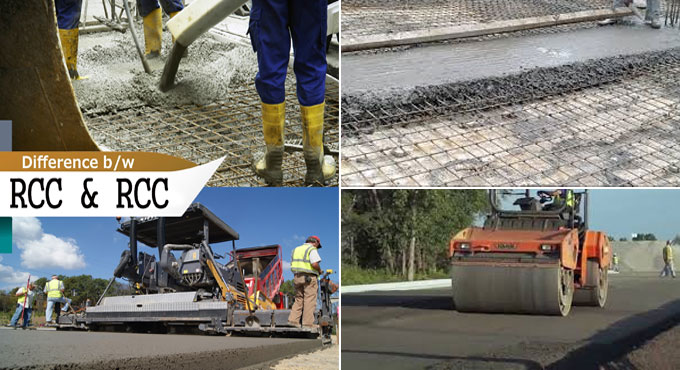
Basic divergences among reinforced cement concrete and roller compacted concrete
Reinforced concrete (RC) stands for a composite material in which comparatively low tensile strength and ductility of concrete resisted by adding reinforcement with greater tensile strength and/or ductility. The reinforcement is normally though not inevitably, steel reinforcing bars (rebar) and normally implanted stagnantly in the concrete prior to setting of the concrete.
The purpose of reinforcing schemes is to withstand tensile stresses in particular areas of the concrete that may lead to undesired cracking and/or structural failure. Modern reinforced concrete comprises of different reinforcing materials which are built with steel, polymers or alternate composite material in combination with rebar or not.
Reinforced concrete is stressed (in compression) permanently in order to enhance the behavior of the final structure under working loads. To perform this pre-tensioning and post-tensioning are normally used.
Various types of structures and components of structures can be constructed with reinforced concrete along with slabs, walls, beams, columns, foundations, frames and more.
RCC (ROLLER COMPACTED CONCRETE): Roller-compacted concrete (RCC) alias rolled concrete stands for a special blend of concrete that basically contains the similar materials as normal concrete but in diverse ratios, and increasingly with partial replacement of fly ash for Portland cement.
RCC is formed by mixing cement/fly ash, water, sand, aggregate and common additives, but comprises much less water. The resultant mix is drier and does not contain any slump. While placing RCC, the material is conveyed with dump trucks or conveyors, distributed with small bulldozers or specially modified asphalt pavers, and then consolidated with vibratory rollers.
Concrete was placed in a similar form and method but not rolled. RCC is specifically useful for dam construction. Normally, RCC is applied for backfill, sub-base and concrete pavement construction, but it is also frequently used for constructing concrete gravity dams since the low cement content and application of fly ash produce less heat at the time of curing even further perform traditional mass concrete placements.
Roller-compacted concrete offers cost benefits across traditional mass concrete dams which comprise of increasing rates of concrete placement, lesser material costs and lower costs related to post-cooling and formwork.
Continuously Reinforced Concrete Pavement: CRCP stands for an exclusive rigid pavement in that it does not have constructed transverse contraction or expansion joints apart from at bridges or at pavement ends. The application of longitudinal steel reinforcement, normally Grade 60 bars, leads to a series of tightly spaced transverse cracks.
The purpose of steel reinforcement is to check the crack spacing and the amount of opening at the cracks as well as retain high levels of load transfer across them. Modern CRCP is constructed with longitudinal reinforcing steel percentages in the range of 0.65 to 0.80 percent (lower in milder climates, higher in harsher).


